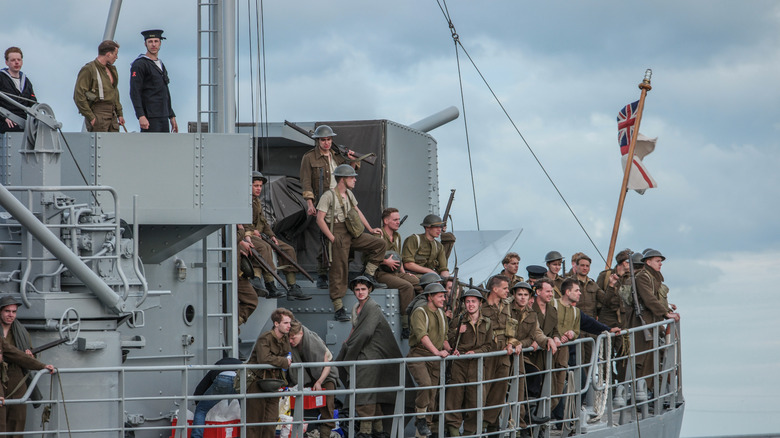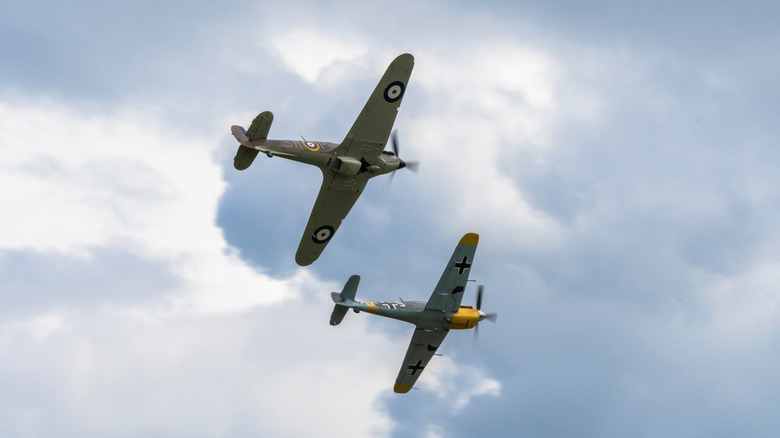How Historically Accurate Is The Movie Dunkirk?
Just nine months after they had first arrived in 1939 in what was expected to be a protracted conflict, the British Expeditionary Force and what remained of the French army were completely surrounded by the German army as the Battle of France drew to a close. They were trapped at the French coastal town of Dunkirk as supplies ran low, most of their tanks had been knocked out or captured, and Luftwaffe bombers threatened them and the ships trying to rescue them.
It is here that Christopher Nolan starts his 2017 film, "Dunkirk." It has become the highest-grossing World War II film to date and was highly praised by critics (via Quartz). Yet, given how many directors of historical films have taken artistic liberties with their subject matter, is Dunkirk an accurate representation of the event? According to Nolan, he went into the project with the aim of reflecting "ecstatic truth," where faithfulness to the experience was pursued at the expense of some historical authenticity (via Video & Filmmaker).
A balance between visual and emotional authenticity
That being said, Nolan's film still goes to great lengths to accurately depict the visuals that British soldiers were faced with. The propaganda leaflets dropped to them at the beginning of the film were replicated from those actually left on the beaches (via History vs Hollywood). The ships and aircraft are for the most part at least visually period correct. The German BF-109 in the film for instance was actually a Spanish-made variant, but with German markings (albeit anachronistic ones, as Nolan wanted to help viewers keep better track of which planes were which), and the differences are minimal to the average audience.
Per Nolan's aforementioned intent, even in areas of pure fiction, the real-life plight of many is invoked. Gibson, a fictional French soldier, takes on the identity of a dead British soldier in the hopes of more easily escaping the enemy. Roughly 123,000 of the 338,000 troops evacuated at Dunkirk were French (via History vs Hollywood). Yet, as naval and civilian rescue ships began to dwindle, so too did their chance of leaving, since the British boats were likely more inclined to help their countrymen still there. While "Gibson" himself did not exist like most of the film's characters, he reflects the desperation of those left behind, who at best went on to face appalling conditions in POW camps (via TIME).

